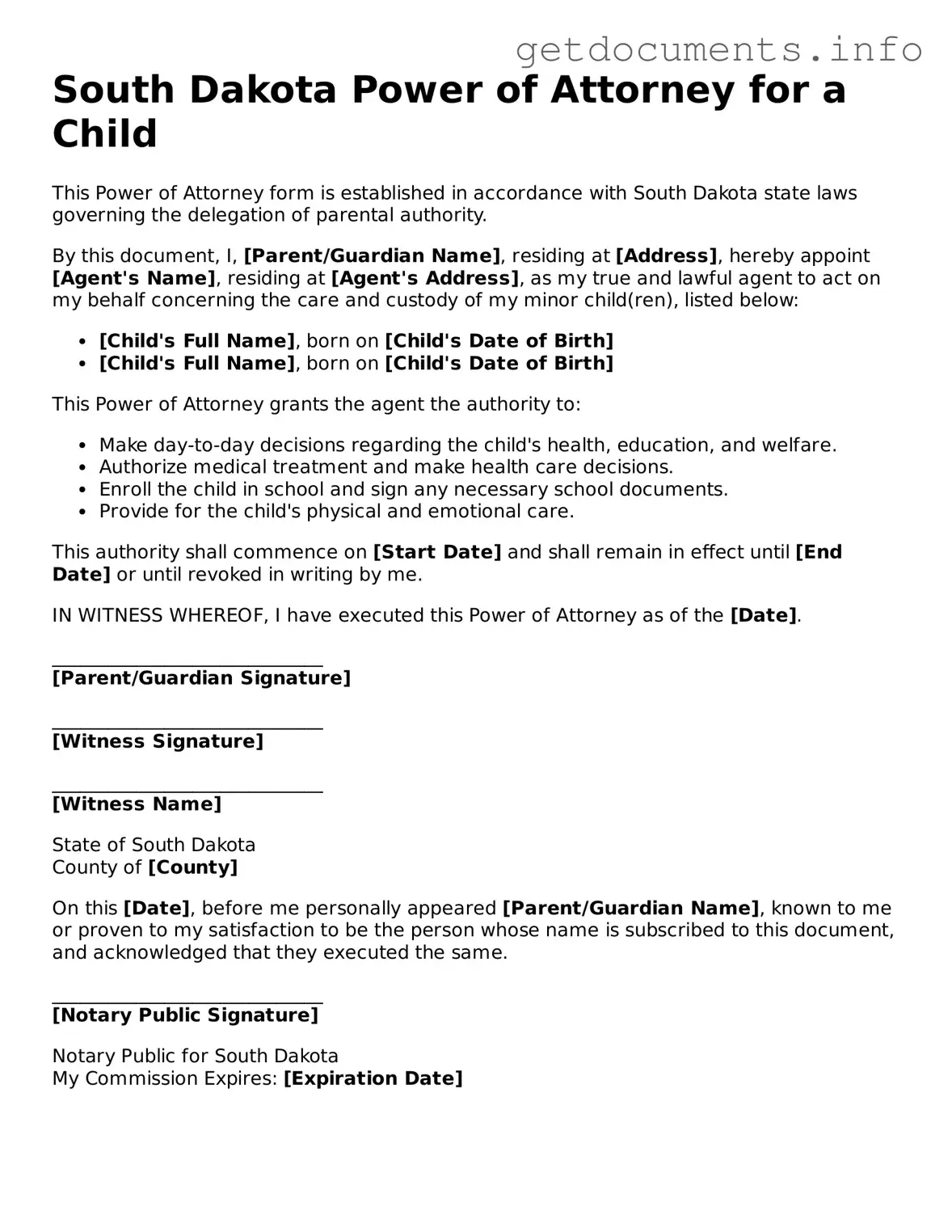The South Dakota Power of Attorney for a Child form is a crucial legal document that allows a parent or legal guardian to delegate certain parental rights and responsibilities to another adult. This arrangement can be particularly beneficial in various situations, such as when a parent needs to travel, is temporarily unable to care for their child, or wishes to provide care for their child by a trusted individual. The form covers essential aspects, including the specific powers granted, the duration of the authority, and any limitations on the powers conferred. It ensures that the child's welfare is prioritized while providing the designated individual the necessary authority to make decisions regarding the child's education, healthcare, and general well-being. Understanding the implications of this form is vital for both parents and caregivers, as it facilitates a smooth transition of responsibilities and helps avoid potential legal complications. By clearly outlining the scope of authority and the responsibilities of the designated caregiver, the Power of Attorney for a Child form serves as a protective measure for both the child and the parties involved.
